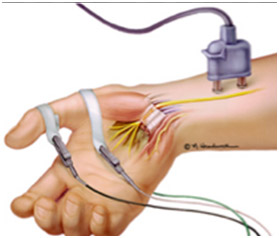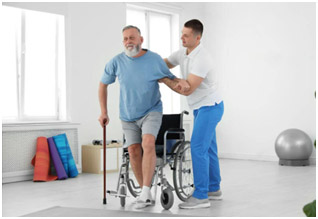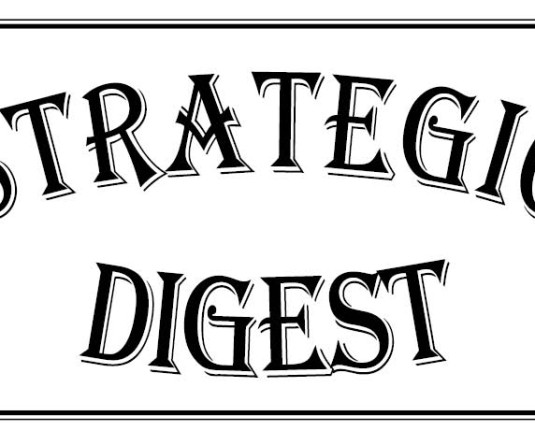
Dr Chenithung Ezung
Physical Medicine and Rehabilitation (PM&R), also established as Rehabilitation Medicine, is a branch of medicine which focuses on restoring functional ability and enhancing quality of life. It is concerned with people who have physical impairments or disabilities affecting the brain, spinal cord, nerves, bones, joints, ligaments, muscles, and tendons.
• Physical medicine is involved with the management and therapy of pain, Impairment and disability using physical approaches and agents.
• Rehabilitation: The process of enabling a person to achieve their full physical, psychological, and interpersonal potential, consistent with his or her psychological, social, vocational, and educational capabilities.
It focuses on the patient as a whole and promotes reintegrating them back into society.
Physiologic or anatomical impairments, contextual constraints, and life plans are all factors to consider.
PMR involves a multi-disciplinary professional team consisting of: Physiatrist (PMR Doctor); Rehabilitation Nurse; Physiotherapist (PT); Occupational therapist (OT); Orthotist and Prosthetist (P&O); Speech therapist; Clinical Psychologist; Social & Vocational worker; Rehabilitation engineer; Last but not least, The Caregivers & relatives of patients.
PMR Doctor: Evaluates, diagnoses, and treats patients, while also providing pain management with medicine. He confers with team members to develop a rehabilitation plan and set goals, all with the purpose of achieving a common functional outcome.

Electro-myography
Physiotherapy: Develops mobility abilities such as balance, endurance, and strength, as well as transfer, walking, and wheelchair skills. It employs the use of electrotherapy and other modalities in the management of pain.
Occupational Therapy: It focuses on teaching basic and Instrumental Activities of Daily Living. This includes hand functional training, cognitive and social skill training, use adaptive equipment, and ergonomics to improve and promote functional activity.
Prosthesist and orthotist: Measures, assembles, and fabricates prosthetic limbs to replace damaged limbs. Orthotics, which assist in the regaining and restoring movement of the limbs or spine, are also made as required. Physical and respiratory care as well as patient and family education are all provided by Rehabilitation nurses.

Spinal cord injury rehabilitation rehabilitation
Rehabilitation Engineer: A person who uses technology solutions to help people reach and enhance their goals.
Vocational Counsellor & Social Worker: Provides guidance and alternative work skills to help people and families maintain their livelihood.
Clinical Psychologist: Assists in the identification and assessment of mental components of rehabilitation such as stress, behaviour, anxiety, and emotions.
Family Members: Throughout, family support and encouragement play a critical role in rehabilitation. They assist in the development of positive effects and the development of self-esteem, resulting in early recovery.

Stroke rehabilitation
Post stroke rehabilitation, spinal cord injury rehabilitation, amputee rehabilitation, traumatic brain injury rehabilitation, pain management (myofascial pain, disc prolapse, sciatica, plantar fasciitis, osteoarthritis, joint and ligament related injuries, nerve compression injuries), cerebral palsy, meningomyelocele musculoskeletal and neuromuscular disorders burns rehabilitation, and rheumatological rehabilitation are all services provided by the PMR speciality.
The PMR speciality also provides alternative pain management with the use of physical modalities such as ultrasound therapy, interferential therapy, short wave diathermy and acupuncture along with the use of oral medications, nerve blocks, intraarticular injections, radioactive ablation frequency. Functional nerve stimulation electrical nerve stimulation helps in regaining power and range of motion towards a functional improvement.
Electromyography and nerve conduction investigations are used by a Physiatrist to diagnose nerve related issues such as nerve compression due to trauma and neuropathy, plexopathies, neuromuscular or muscular pathologies.
In order to reach out to the people with special needs, the Community Based programme (CBR) has been started. It is a strategical programme for the general community, a development that provides rehabilitation, poverty reduction, equalization of opportunities and social inclusion of people with disabilities. The main goal in starting the programme is to reach out to the people with disabilities and educate them and the caretakers about the facilities, benefits and availability of the services and therefore improving the quality of life.
The writer is Junior Consultant and HOD, Department of Physical Medicine and Rehabilitation (PM&R) CIHSR, Diphupar ‘A’ Dimapur, Nagaland.






